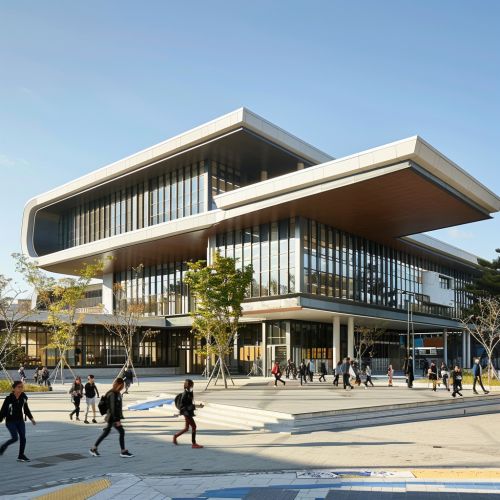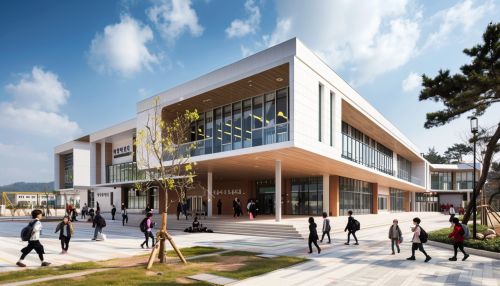Education in South Korea
History
The history of education in South Korea can be traced back to the Three Kingdoms period, when the Goguryeo, Baekje, and Silla kingdoms established state-run schools to educate the sons of the nobility. The Goguryeo kingdom, in particular, was known for its advanced educational system, which included the Taehak, a national university that taught Confucian classics, and local schools called Gukhak.
During the Joseon Dynasty (1392-1910), the education system was further developed with the establishment of Confucian-based schools such as the Sungkyunkwan, which served as the highest educational institution, and Hyanggyo, local schools established in provinces and counties. The education during this period was heavily focused on Confucian teachings and civil service examinations known as GwageoCivil Service Examinations.
The Japanese occupation (1910-1945) brought significant changes to the education system in Korea. The Japanese colonial government established a modern education system based on the Japanese model, which emphasized vocational and technical education. However, the education provided to Koreans was inferior to that provided to Japanese students, and the curriculum was designed to assimilate Koreans into the Japanese culture.
After the liberation from Japanese rule in 1945 and the subsequent division of the Korean peninsula, South Korea established its own education system. The Education Law enacted in 1949 laid the foundation for the current education system, which includes six years of primary education, three years of middle school, three years of high school, and four years of university education.


Structure of the Education System
The education system in South Korea is divided into pre-primary, primary, secondary, and tertiary education.
Pre-primary Education
Pre-primary education in South Korea is provided by kindergartens and daycare centers for children aged 3 to 5. Kindergartens, known as Yoochien in Korean, are usually private and offer a curriculum that includes basic literacy and numeracy, as well as physical education and arts and crafts. Daycare centers, on the other hand, provide care and education for children from infancy to age 5.
Primary Education
Primary education in South Korea is compulsory and free of charge. It lasts for six years, from age 6 to 11, and is provided by public and private schools. The curriculum includes subjects such as Korean language, mathematics, science, social studies, physical education, music, and art.
Secondary Education
Secondary education in South Korea is divided into middle school (junior high school) and high school. Middle school covers grades 7 to 9 and is compulsory. The curriculum includes subjects such as Korean language, English, mathematics, science, social studies, physical education, music, and art.
High school education covers grades 10 to 12 and is not compulsory. There are several types of high schools in South Korea, including general high schools, vocational high schools, and specialized high schools. General high schools offer a broad curriculum similar to that of middle schools, while vocational high schools offer specialized courses in areas such as agriculture, commerce, and technical skills. Specialized high schools include science high schools, foreign language high schools, and arts high schools, which offer intensive education in their respective fields.
Tertiary Education
Tertiary education in South Korea is provided by universities, colleges, and other institutions that offer bachelor's, master's, and doctoral degrees. There are both public and private universities in South Korea, with the latter being the majority. The admission to universities is highly competitive and is based on the College Scholastic Ability Test (CSAT)CSAT, a standardized exam administered by the government.
Education Policy
The Ministry of Education is the main government agency responsible for education policy in South Korea. The ministry's responsibilities include setting educational standards, developing curriculum and textbooks, administering the national examinations, and overseeing teacher training.
One of the key policies of the Ministry of Education is the equalization policy, which was implemented in the 1970s to reduce the educational gap between urban and rural areas and between different regions. The policy includes measures such as standardized curriculum, equal distribution of educational resources, and a lottery system for high school admission.
Another important policy is the lifelong education policy, which aims to provide learning opportunities for all citizens throughout their lives. The policy includes programs such as adult education, vocational training, and online learning.
Challenges and Issues
Despite its achievements, the education system in South Korea faces several challenges and issues. One of the main issues is the high pressure and competition in education, which is often attributed to the importance placed on education in Korean society and the competitive college entrance exam system. This has led to high rates of private tutoring and study hours, as well as stress and mental health issues among students.
Another issue is the inequality in education. Despite the equalization policy, disparities in educational opportunities and outcomes still exist between different regions, between urban and rural areas, and between different socioeconomic groups.
The education system in South Korea is also facing the challenge of adapting to the changing needs of the 21st century. This includes the need to foster creativity and critical thinking skills, to integrate technology into education, and to prepare students for a rapidly changing job market.
